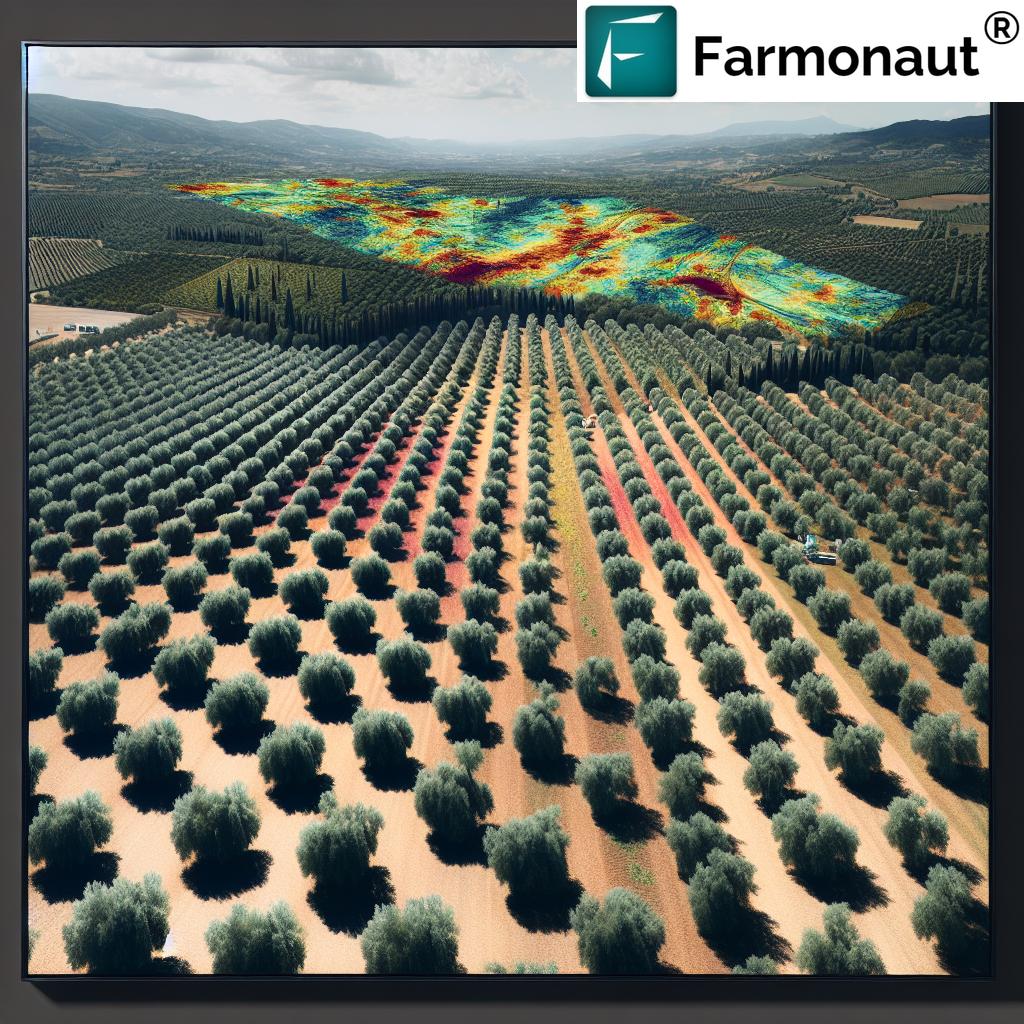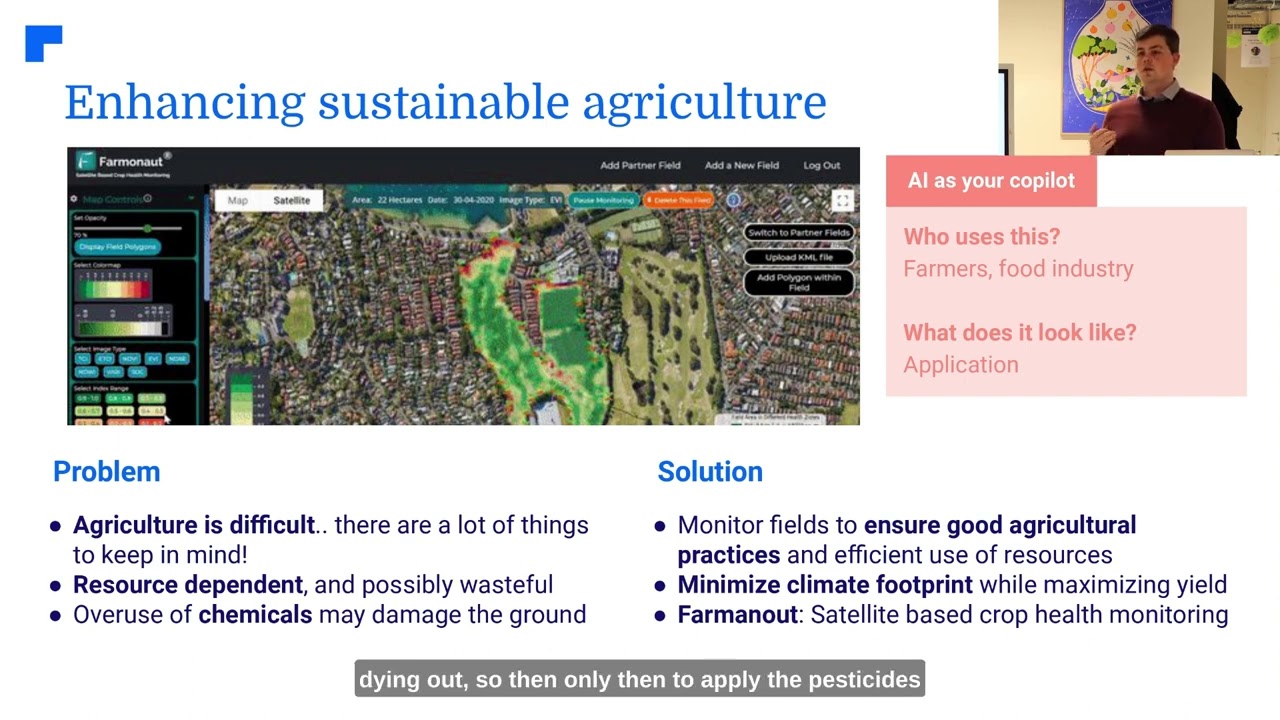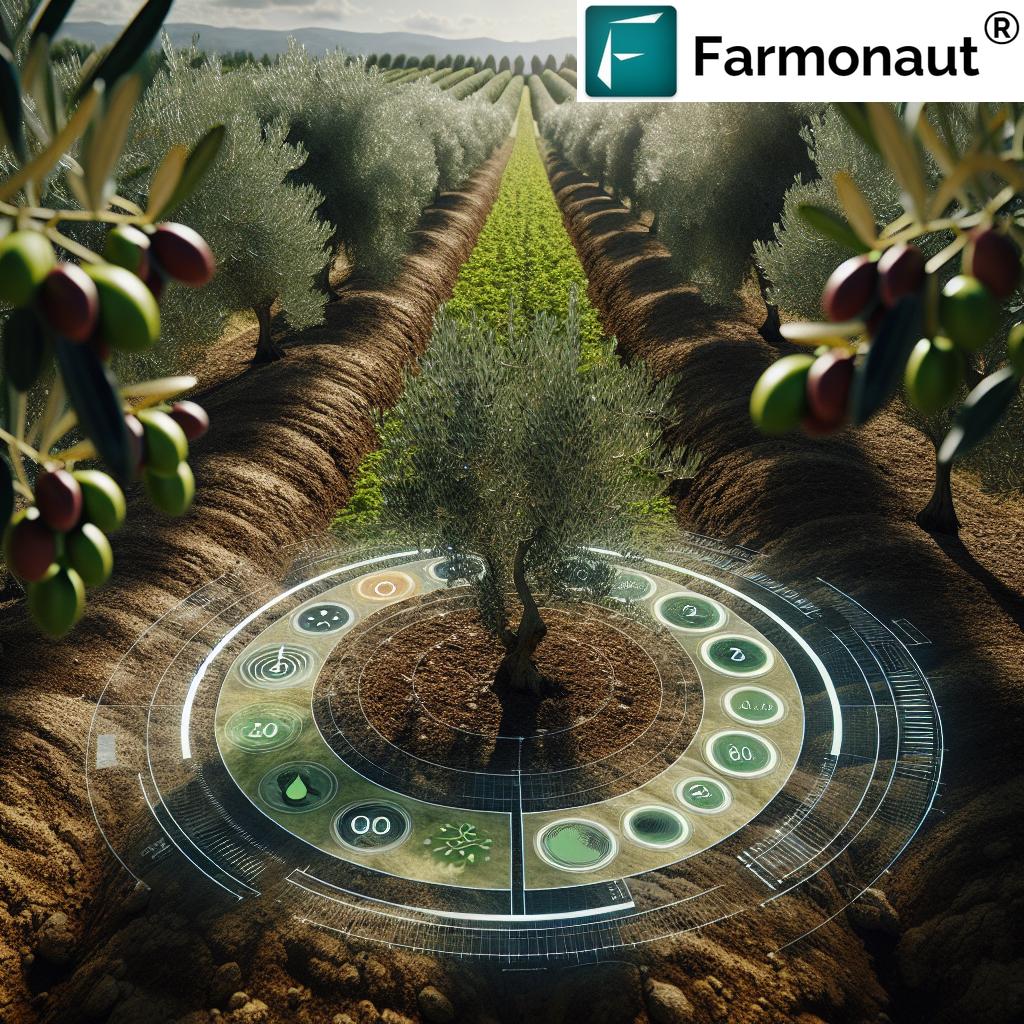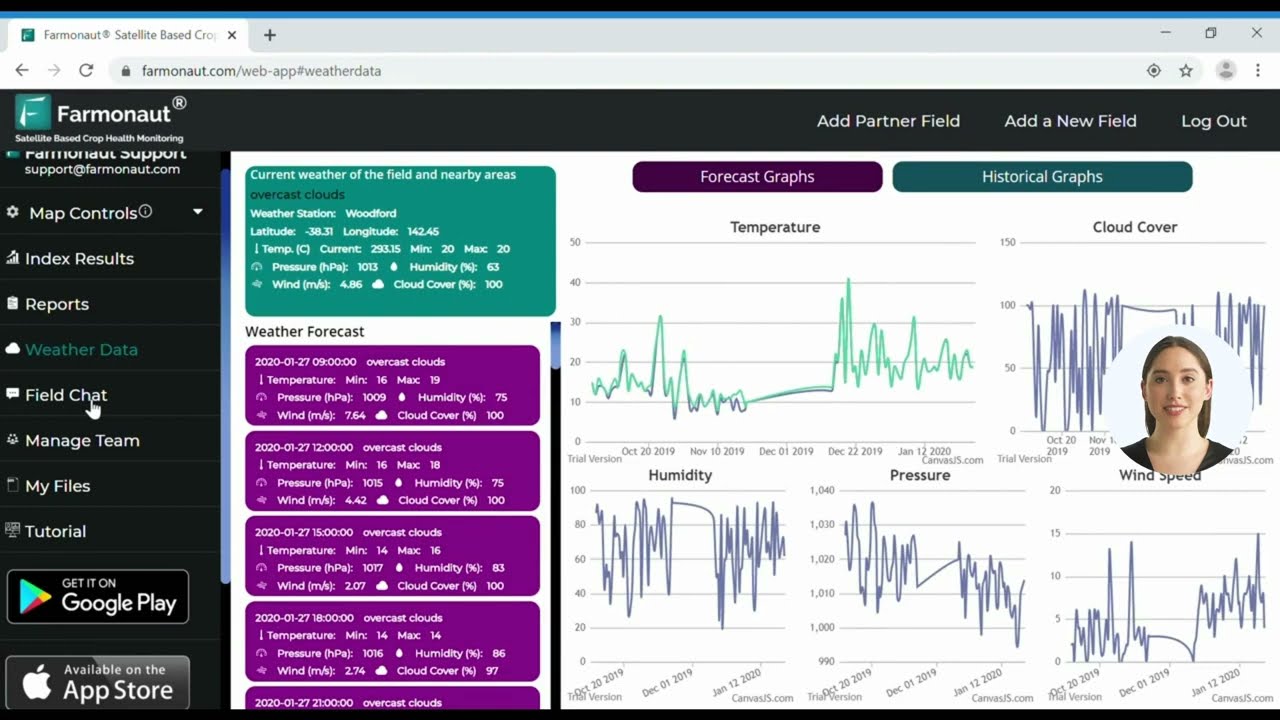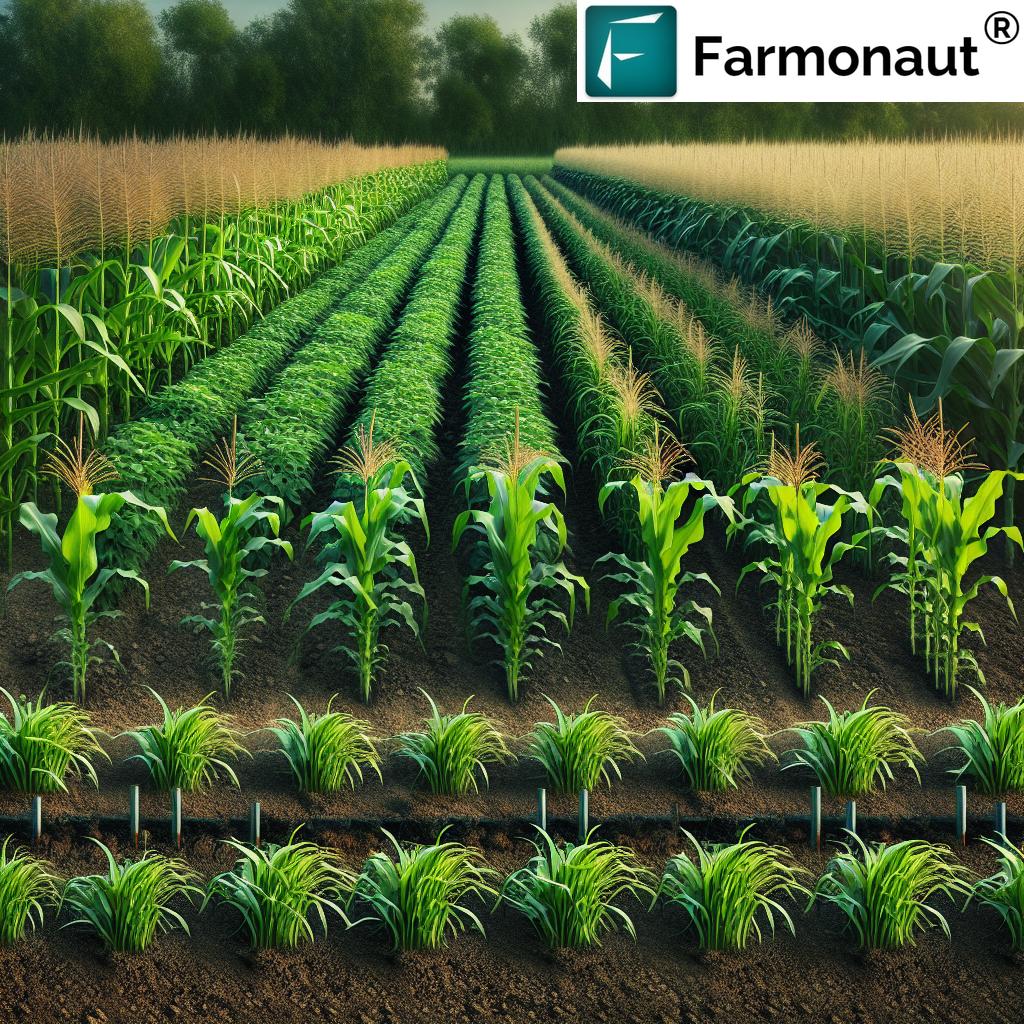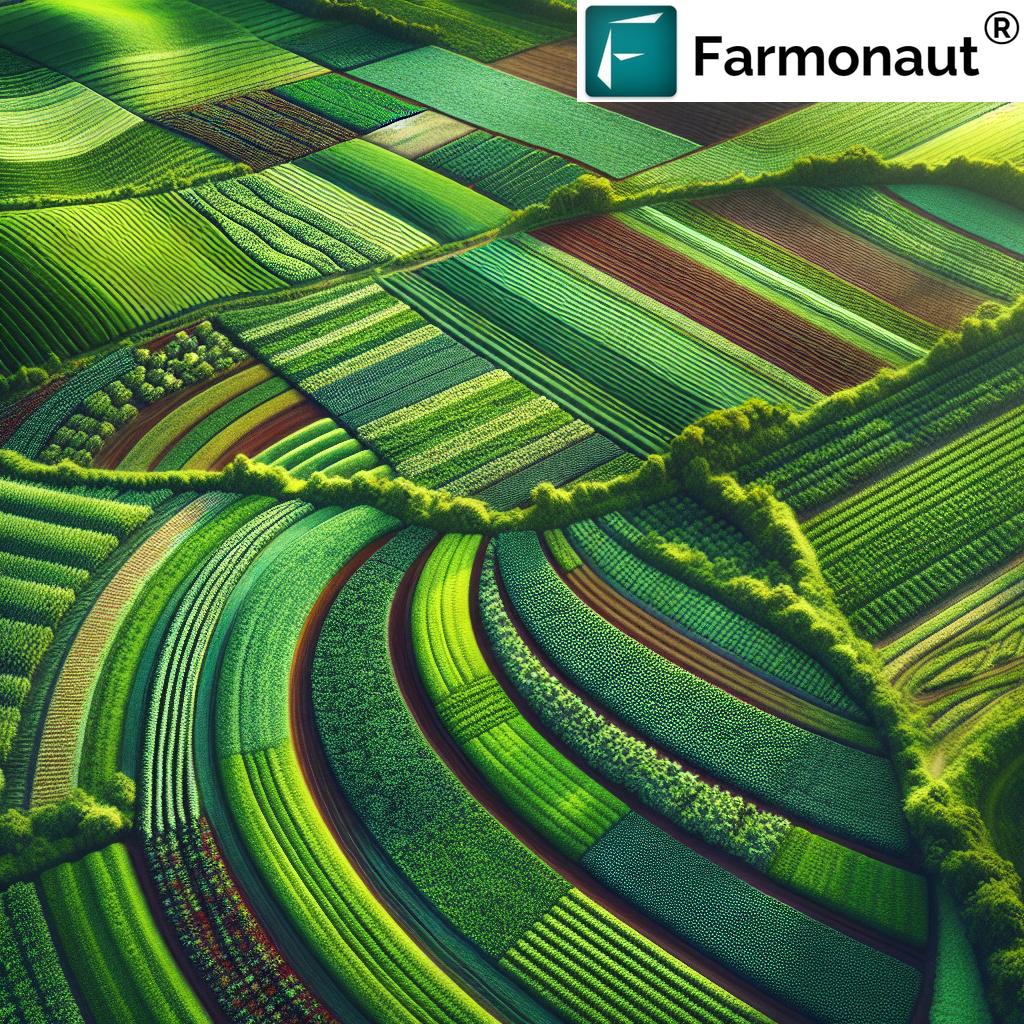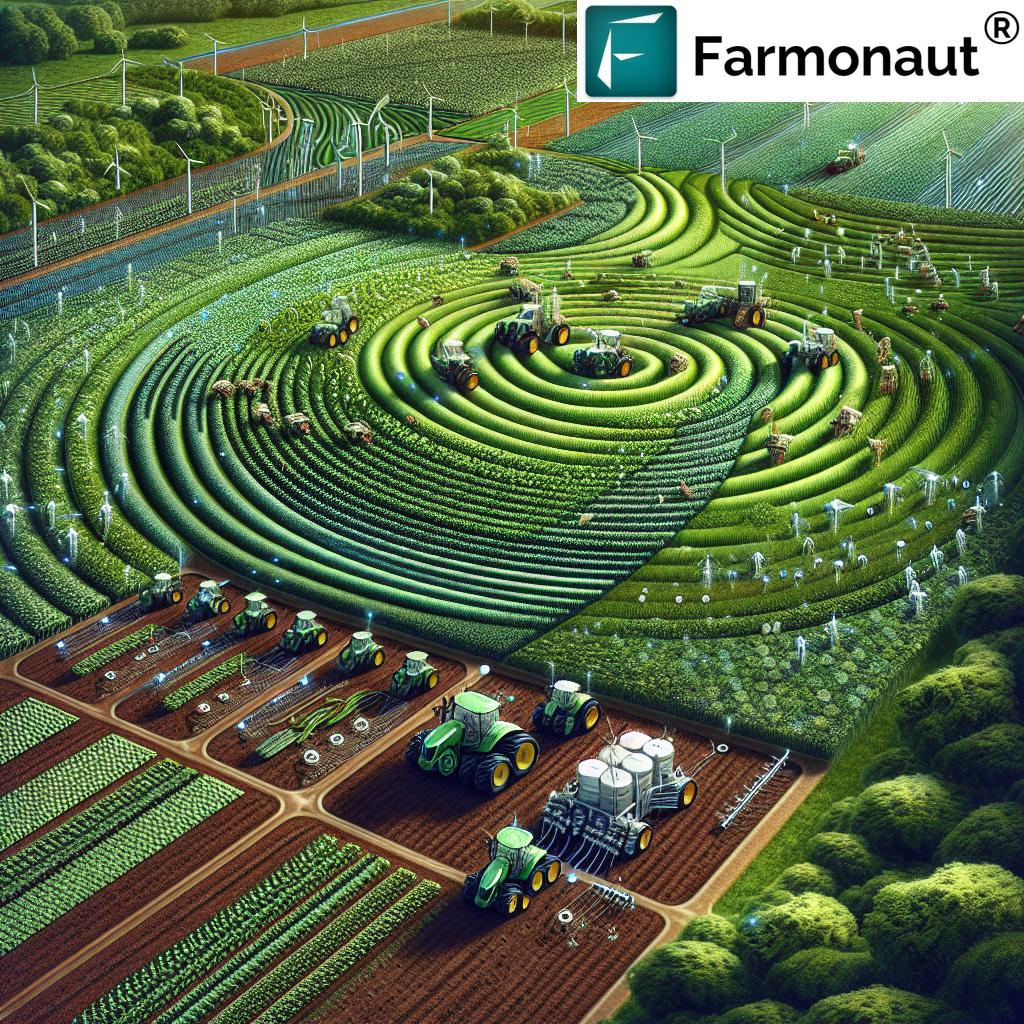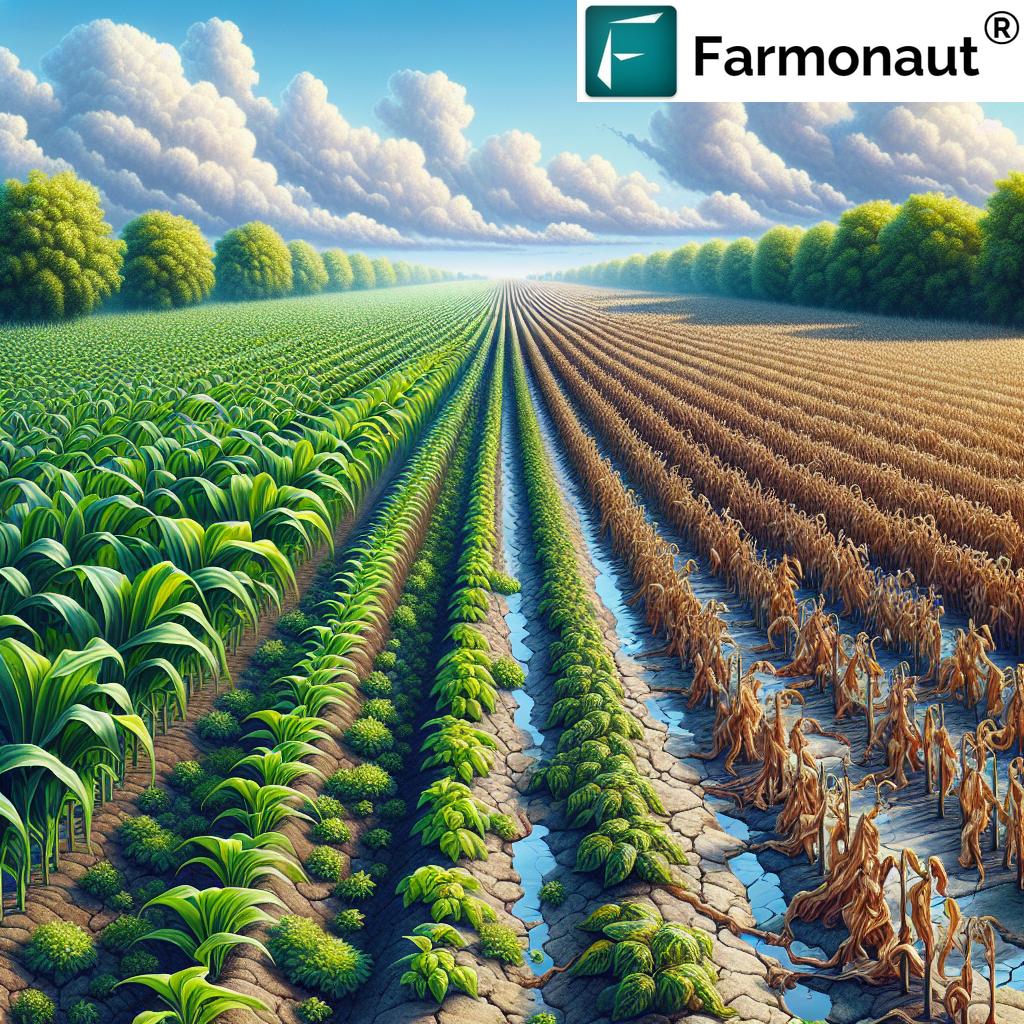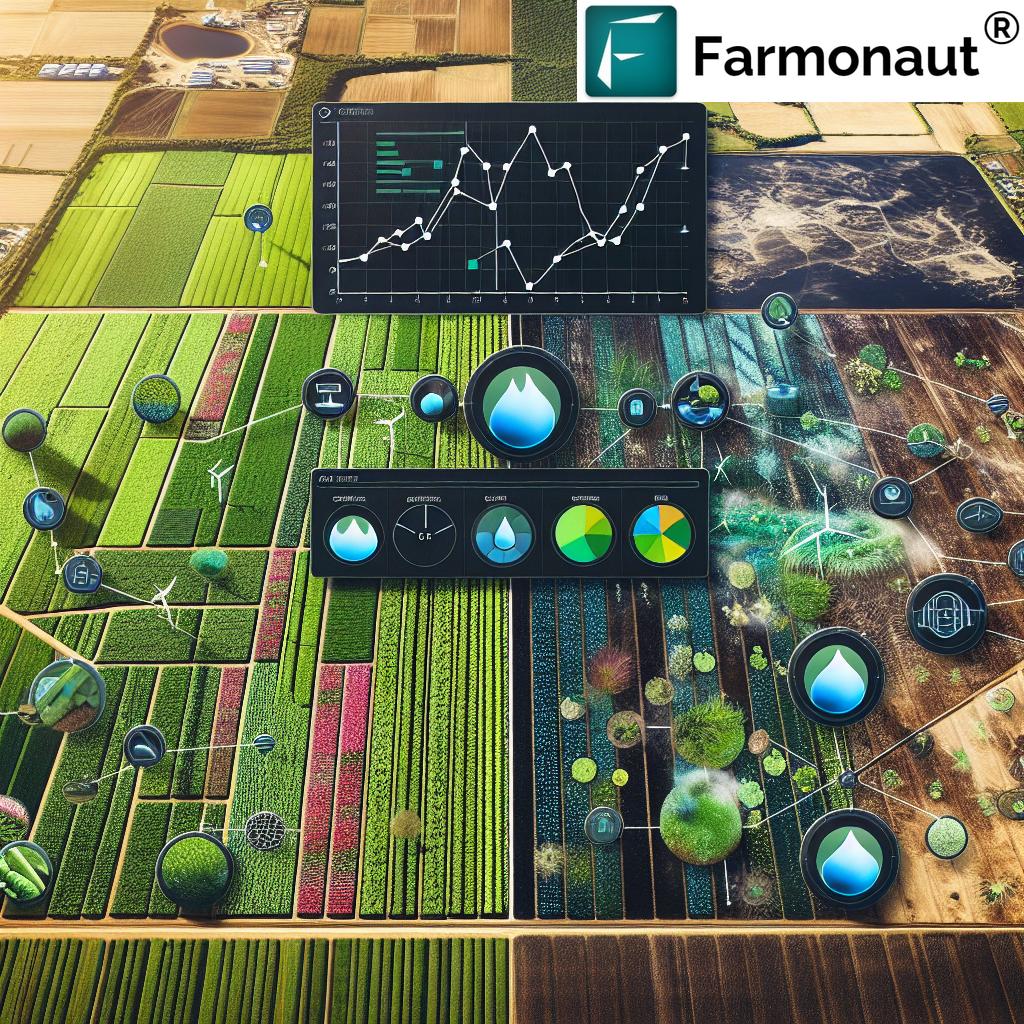AI for Olive Tree Health Monitoring: 5 Shocking Breakthroughs
“AI-powered imaging detects olive tree diseases up to 90% faster than traditional methods.”
Introduction: The Revolution of AI in Olive Tree Health Monitoring
Welcome to a new era in olive cultivation and orchard health management. As passionate members of the agricultural technology community, we have witnessed the incredible transformation brought by artificial intelligence and multispectral imaging in Mediterranean regions and beyond. These innovations are empowering olive growers to tackle age-old challenges—like disease detection, efficient irrigation, and sustainability—with unprecedented precision and speed. In this comprehensive article, we explore the 5 most astonishing breakthroughs in AI for olive tree health monitoring, guiding you through the science, impact, and future of this high-value field.
The Significance of Olive Cultivation in Mediterranean Regions
For centuries, olives have been a cornerstone of agricultural production, especially in Mediterranean regions like Greece, Spain, and Italy. The cultural and economic heritage tied to olive trees is profound, forming the backbone of local economies and diets. Extra virgin olive oil is not merely a staple food; it represents the identity, traditions, and livelihoods of millions. As global demand for olives continues to climb, our ability to maintain healthy, productive orchards becomes increasingly vital.
- Economic Impact: Mediterranean countries lead global olive oil exports, contributing billions to local economies.
- Cultural Heritage: Olive groves have shaped Mediterranean landscapes for over 5,000 years.
- Dietary Value: The Mediterranean diet—often lauded for its health benefits—relies on olive oil as a primary ingredient.
Olive Tree Health Challenges: Diseases, Drought, and Beyond
Despite its significance, olive cultivation faces a host of challenges that threaten orchard sustainability:
- Disease Outbreaks: Xylella fastidiosa, responsible for Olive Quick Decline Syndrome (OQDS), and Verticillium wilt are two of the most destructive olive tree diseases in the Mediterranean and worldwide.
- Environmental Stressors: Prolonged droughts and water scarcity are intensifying due to climate change, making efficient irrigation more important than ever.
- Resource Limitations: Traditional monitoring methods rely heavily on manual inspection, which is time-consuming, subjective, and often unable to identify threats in their early stages.
As a result, many olive growers struggle to achieve sustainable production levels and are searching for smarter, data-driven solutions.
Breakthrough #1: AI in Early Olive Tree Disease Detection
One of the most impactful breakthroughs in AI for olive cultivation is rapid and reliable olive tree disease detection. Early identification of pathogens is key to preventing catastrophic losses—especially when facing formidable foes like Xylella fastidiosa and Verticillium wilt.
Why Traditional Disease Detection Falls Short
- Subjectivity: Reliance on expert observation leads to inconsistent results.
- Time-Intensive: Manual inspection of large orchards is slow and laborious.
- Delayed Interventions: By the time classic symptoms appear, diseases like OQDS have often spread beyond control.
How AI Transforms Olive Disease Detection
- Machine learning algorithms analyze subtle changes in leaf color, texture, and canopy reflectance—undetectable to the naked eye.
- Computer vision systems process vast volumes of multispectral images from obvious and hidden areas, identifying disease symptoms at their earliest stages.
- Automated alerts allow timely, targeted interventions, reducing both yield loss and chemical usage.
Real-World Applications for Disease Detection
Innovative projects like SENSOR 2.0 (Italy) and MyOliveGroveCoach (Greece) have pioneered AI-driven olive grove monitoring systems. These systems combine unmanned aerial vehicles (UAVs), advanced sensors, and analytical models. By integrating multispectral imaging, growers can now:
- Detect Xylella fastidiosa infection in olives before mass decline occurs (Xylella fastidiosa detection in olives).
- Pinpoint Verticillium wilt in olive trees even when early symptoms are ambiguous (Reference).
- Enable localized treatment strategies to minimize environmental and economic impact.
The end result? AI in olive cultivation is revolutionizing how we fight disease, making sustainable olive orchard management within reach.
“Multispectral analysis can identify water stress in olive orchards with over 85% accuracy.”
Breakthrough #2: Multispectral Imaging for Olive Health Monitoring
The combination of multispectral imaging and artificial intelligence delivers game-changing plant health insights. Through this approach, we’re able to assess the physiological state of olive trees dynamically across vast orchards.
What is Multispectral Imaging?
Multispectral imaging uses sensors on satellites, drones, or UAVs to capture data across multiple bands of the electromagnetic spectrum, including visible and non-visible (infrared, near-infrared) wavelengths. Unlike conventional images, multispectral imagery exposes plant health and environmental stressors, such as disease and water scarcity, on a biochemical level.
- NDVI (Normalized Difference Vegetation Index): Measures live green vegetation, giving a rapid estimate of plant vigor and stress.
- Red Edge & SWIR Bands: Enhance sensitivity to early pathogen symptoms—long before our eyes can see.
How AI Uses Multispectral Data for Precision Olive Monitoring
- Data-rich multispectral images from olive orchards are fed into neural networks and machine learning engines.
- The AI analyzes subtle spectral patterns, generating real-time health maps for each olive tree and section of the orchard.
- Anomaly detection systems flag trees experiencing stress, pest attacks, or onset of diseases.
By leveraging multispectral imaging for olive health, growers gain the power to act before damage is visible, enabling proactive orchard management.
Breakthrough #3: Drone Technology in Agriculture for Olive Groves
The deployment of drone technology in agriculture has elevated olive orchard management to a new standard. Unmanned aerial vehicles (UAVs) equipped with cutting-edge sensors can now cover large estates in minutes, providing high-resolution images and actionable data.
How Drones Empower Olive Grove Monitoring Systems
- Frequent Aerial Surveys: Drones can repeatedly scan entire orchards with high precision, enabling monthly, weekly, or even daily monitoring.
- Data Fusion: Imagery from drones integrates with other data sources (like soil and weather sensors) for a complete orchard health profile.
- Early Stress Detection: By combining multispectral and visual data, drones identify “hot spots” of disease, pest attack, or water stress before they escalate.
These advancements ensure that olive growers can intervene proactively instead of reactively, addressing problems as soon as they arise. The resulting efficiency, reduced chemical usage, and improved yields are revolutionizing sustainable olive farming.
Breakthrough #4: AI-Powered Irrigation Management for Olive Orchards
With rising water scarcity in Mediterranean and arid regions, smart irrigation management has become a crucial component of olive production. Traditional watering schedules fail to adjust to changing soil conditions, weather patterns, and real-time crop needs.
How AI Enhances Irrigation Practices for Olive Trees
- Pioneering AI models analyze vast sets of historical patterns—from rainfall trends to evapotranspiration rates—creating tailor-made irrigation schedules for each orchard.
- AI-powered soil moisture monitoring for olive trees brings unprecedented accuracy, adjusting water delivery based on actual crop demand and evaporation losses.
- Automated decision systems can trigger irrigation remotely, saving labor and maximizing water efficiency.
Adoption of AI irrigation scheduling for olive trees (as described in sources like AI ML Programming) leads to water usage reduction, healthier soils, and robust yields.
Benefits of Precision Irrigation with AI
- Up to 30% water usage reduction compared to uniform traditional systems.
- Improved fruit quality and tree resilience during drought.
- Environmental sustainability: Less runoff, reduced nutrient loss, and better adaptation to climate change.
Find out more about Farmonaut’s carbon footprinting tools, which help olive growers monitor and reduce their environmental impact while optimizing water and input use for truly sustainable agriculture.
Breakthrough #5: Sustainable Olive Orchard Management with AI
Sustainable olive orchard management goes beyond disease and irrigation—it’s about optimizing every aspect of orchard operations. Through AI-powered platforms, olive growers can access holistic decision support systems (DSS) that combine:
- In-field sensor data (moisture, temperature, pest activity)
- Remote sensing images (satellite, UAV, drone)
- Machine learning models for yield forecasting, pest prediction, and nutrient management
Comprehensive olive grove monitoring systems integrate all these layers, making orchard management data-driven, efficient, and profitable.
For supply chain transparency and premium market access, AI-driven systems employ blockchain-based traceability—ensuring every bottle of olive oil is tracked from tree to table. This not only fosters consumer trust but also reduces fraud and helps you meet regulatory standards.
Key Features of AI-Driven Olive Orchard Management Platforms
- Automated crop health and soil moisture alerts on your smartphone or web dashboard
- Resource management tools help track and optimize fertilizer and pesticide applications
- Yield and harvest forecasting by analyzing plant health data and historical patterns
- Secure, scalable, cloud-based access—no hardware required
For large-scale managers and cooperatives, Farmonaut’s Large Scale Farm Management solution is ideal for organizing teams, field operations, and logistics in vast olive groves.
Comparing Traditional vs. AI-Driven Olive Tree Health Monitoring Methods
| Monitoring Aspect | Traditional Method (Est. Values) |
AI-Powered Method (Est. Values) |
Impact/Benefit |
|---|---|---|---|
| Disease Detection Accuracy (%) | 65–75% | 90–95% | Earlier, more reliable detection = reduced yield loss |
| Monitoring Frequency (per month) | 1–2 | 4–12+ (Remote) | More data, better-informed decisions |
| Water Usage Reduction (%) | 0–10% | 20–35% | Supports sustainability & cost savings |
| Time to Detect Issues (days) | 14–30 | 1–2 | Rapid response prevents spreading |
| Yield Improvement (%) | 0–5% | 10–20% | Boosted productivity & profitability |
These numbers underscore how AI-powered olive grove monitoring systems outperform traditional methods in every aspect critical to modern orchard management. For up-to-date advice and flexible precision agriculture plans, explore our Farmonaut Jeevn AI Advisory System—delivering customized satellite and AI insights to your device.
Farmonaut: Pioneering Affordable AI for Precision Olive Cultivation
At Farmonaut, our mission is to bridge the gap between cutting-edge technology and everyday farming. Here’s how our solutions democratize high-tech olive tree health monitoring:
- Satellite-Based Multispectral Monitoring: Farmonaut’s app delivers NDVI, plant vigor, and moisture maps for olive orchards using satellite data—no drone or field sensors required.
- AI-Based Advisory (Jeevn AI): Get real-time, personalized alerts on disease risk, moisture stress, and recommended actions. Our AI-powered advisory system supports healthy orchards across diverse environments.
- Blockchain Traceability: Certify your premium olive oil with Farmonaut’s blockchain-based product tracking—enhancing consumer trust and reducing fraud.
- Resource & Logistics Tools: Manage fleets, schedule fieldwork, and optimize input use with our fleet management tools.
- Carbon Footprinting: Meet global sustainability standards with real-time carbon tracking and analysis (visit our carbon footprinting page for more).
- Flexible Access: Pick your plan via web, Android or iOS apps, or via API for business integration (API | Developer Docs).
Farmonaut’s solutions are highly scalable; whether you manage a family olive grove or a multinational agricultural enterprise, our platform adapts to your needs and grows with you.
Challenges, Limitations & Future Innovations
No discussion of artificial intelligence in agriculture is complete without acknowledging its current limitations and the exciting road ahead for olive orchard management.
Current Challenges
- Technology Costs: Advanced imaging and processing systems (especially drones and high-res sensors) may require upfront investment—for now, platforms like Farmonaut help bridge this gap by offering affordable, satellite-driven solutions.
- Complexity of Environmental Data: Mediterranean orchards range from arid coastal plains to mountainous regions, necessitating AI models that can generalize and adapt to diverse local conditions.
- Data Quality & Accessibility: Reliable disease identification depends on abundant, annotated data for model training, which remains a challenge globally.
Future Directions in AI and Olive Cultivation
- Enhanced Scalability: Making AI-powered monitoring accessible to smaller and remote growers across the Mediterranean and other olive-producing regions.
- Better Cost-Effectiveness: Leveraging satellite imaging and cloud-based AI to reduce per-hectare costs for precision monitoring.
- Automated Decision Making: Integrating AI-driven recommendations directly with automated irrigation and crop protection systems.
- Continual Model Training: More collaborative, open-source datasets and model improvement—accelerating disease detection and prediction accuracy.
No matter your location—Greece, Spain, North Africa, Turkey, Middle East—or the scale of your operation, the future of olive agriculture is undeniably data-driven, sustainable, and resilient.
FAQ: AI for Olive Tree Health Monitoring
What is AI-powered olive tree disease detection?
AI-powered disease detection uses artificial intelligence and multispectral imaging to analyze subtle signs of stress or infection in olive trees. It enables faster, more accurate identification of diseases like Xylella fastidiosa (OQDS) and Verticillium wilt, often before visible symptoms appear, allowing for rapid, targeted interventions.
How does multispectral imaging improve olive health monitoring?
Multispectral imaging captures plant health data across multiple wavelengths, revealing stressors and diseases invisible to standard photography or human observation. When paired with AI, this approach delivers real-time maps and alerts for plant stress, water scarcity, and early-stage infections, making orchard management more proactive.
Can AI optimize irrigation in olive orchards?
Yes. AI systems analyze weather, soil moisture, and crop growth patterns to create precise, adaptive irrigation schedules. This ensures each tree receives the optimal amount of water, reducing waste, improving drought resistance, and supporting sustainable olive orchard management.
What are the main diseases targeted by AI monitoring?
The primary olive tree diseases addressed by AI monitoring include Xylella fastidiosa (Olive Quick Decline Syndrome, OQDS) and Verticillium wilt. Both are capable of devastating entire orchards, but early detection and intervention can mitigate losses and protect your yield.
Is it possible to implement these systems at scale?
Absolutely. Modern platforms like Farmonaut offer scalable solutions suitable for both small family groves and large plantations, enabling growers throughout Mediterranean regions—and worldwide—to benefit from AI and satellite monitoring.
Conclusion & Next Steps for Olive Growers
The emergence of AI for olive tree health monitoring is transforming how we manage, protect, and optimize this cherished crop. By adopting artificial intelligence, multispectral imaging, and data-driven management systems, olive growers are not just surviving the threats of disease and drought—they are thriving, boosting yields, conserving water, and protecting the natural and cultural legacy of Mediterranean agriculture.
Now is the perfect time to reimagine your approach. Whether you want to:
- Detect disease outbreaks before they spread
- Reduce water usage and improve tree health
- Simplify resource management and boost sustainability
We invite you to explore the Farmonaut platform—your gateway to affordable, scalable, and cutting-edge AI for olive tree health monitoring.
For deeper integration and large-scale agricultural development, connect to our API portal or see our developer documentation today.
Ready to bring the next generation of olive cultivation to your orchard? Get started now!


